622 DGS students turn out for nation-wide walkout
At 10 a.m. on Wednesday, March 14, the hallways of DGS filled with 622 students leaving their third period classes to fight for stricter gun laws and remember the 17 students killed in Parkland, Florida one month ago.
At the conclusion of the walkout, the 622 participants returned through the athletic entrance and were met with a wall of four swipe stations, operated by deans and faculty members.
One by one, students were printed swipe tickets, each assigned a detention per school policy.
According to the swipe tickets, students have until March 23 to serve their detention, which would leave eight days for all 622 studesnts to serve their detentions.
Freshmen Derek Hoffman and Jessica Hedberg received their first detentions because of the protest.
“I’m happy with my detention. At first I was a little nervous but now, I’m proud of it. I’ll go, I’ll be happy about it. I’ll smile the whole time and make the best of it,” Hoffman said.
“It’s definitely worth the consequences, someone’s life versus a detention? You don’t even have to think about it,” Hedberg said.
Later that afternoon, Associate Principal Karen Taylor made an announcement that students will be able to fulfill their detention requirement by attending a forum on school safety. The discussion will take place on Monday, March 19 from 8-9 a.m.
“DGS students and administrators will meet to discuss what we can do to make our school a safe place for everyone. If you choose to join us and are present for the entire discussion, you will recieve credit for one hour of detention,” Taylor said in an email to students.
Most students reported their classrooms half-empty with some students choosing to continue their typical day in their third period classes. Others joined in the nation-wide protest. Senior Alexis Fuller was among the group.
“I walked out because the last few years especially, we have done nothing about gun violence, and it’s happening over and over again. This is finally a chance for us to take a stand and do what’s right,” Fuller said.
Other students, like senior Jimmy Hennelly, chose to walk out in respect of the Parkland victims.
“I walked out to support the 17 families who have lost their child,” Hennelly said.
Other students saw the event through a different perspective. Senior Brett Reigler felt that he wasn’t in a position to walk out, as he didn’t strongly believe in the reason for protest.
“I don’t think walking out will help change gun laws. When you turn 18, you vote for it. That’s the best way to change it,” Reigler said.
Senior Sydney Antiporek believes there is an importance for standing up for what you believe in but did not know if DGS was the right setting.
“There’s different ways to use your voice rather than interrupting the school day,” Antiporek said.
The turnout was surprising for many, especially for senior student organizer Max Schmidt-Bailey who was amazed by the amount of participants, as the online sign-up held around 300 names.
Schmidt-Bailey and his fellow student leaders planned to comply with the guideline of the nation-wide walkout and stay out of class for 17 minutes. For most students, this wasn’t the case.
Sophomore Peter Burrows expressed that he was proud to walkout in remembrance of the victims but didn’t realize the 17 minute protest would take up the majority of his third period class.
“I pretty much missed my entire third period minus 5-10 minutes. The swipe stations were taking forever,” Burrows said.
“I get it’s for safety, [but] what they wanted to do with their process increased the time students were out of class significantly. Some students missed the entire period. I don’t want to say we’re not responsible, but we’re not responsible,” Schmidt-Bailey said.
Principal Edward Schwartz believes that even with the additional class time missed for some students, the swipe stations were still effective.
“Even though it took 20-25 minutes, I believe that the swipe stations were the best tool available to account for students. Without knowing exactly how many students would participate, there was no way to accurately predict how long scanning everyone into the building would take,” Schwartz said.

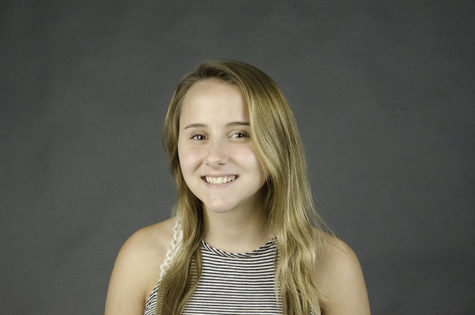

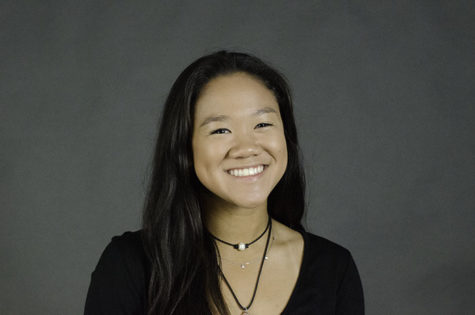



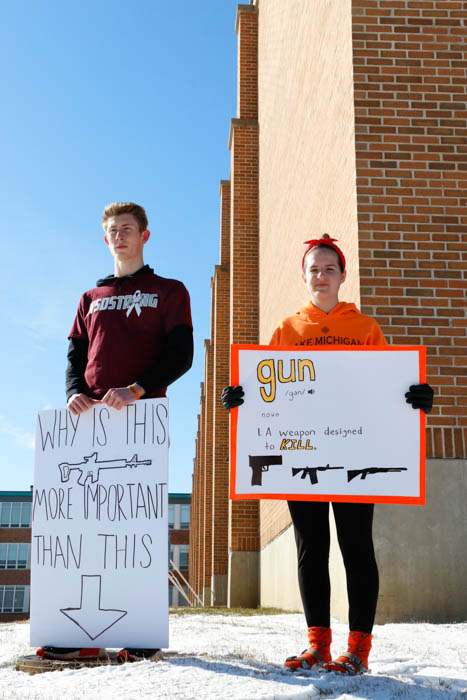
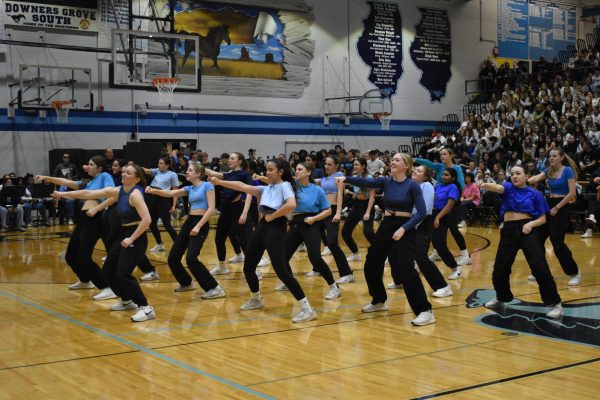
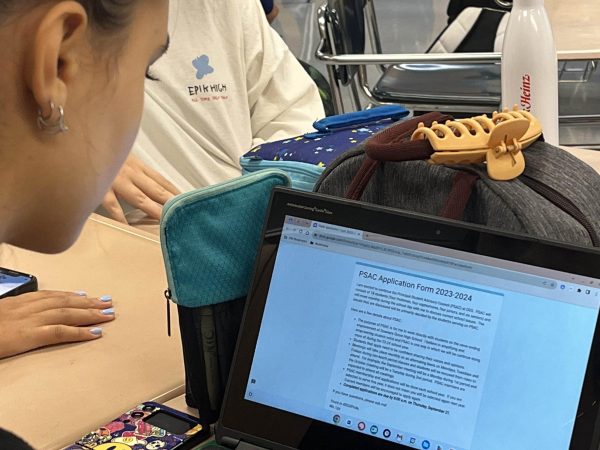
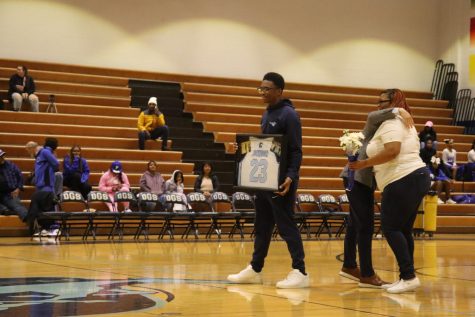
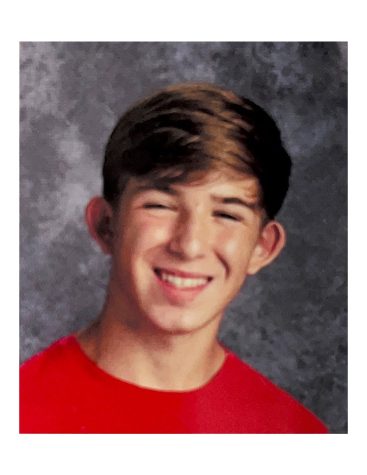
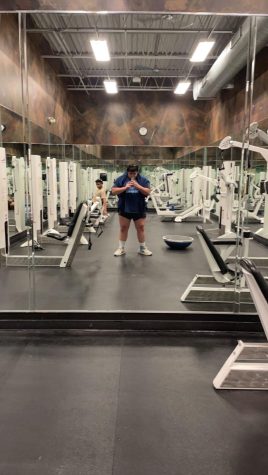
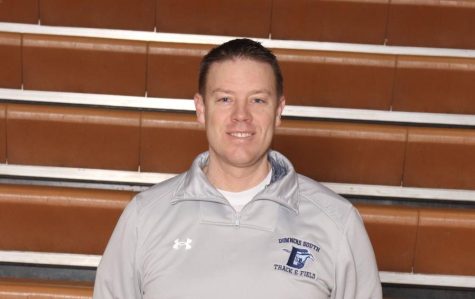
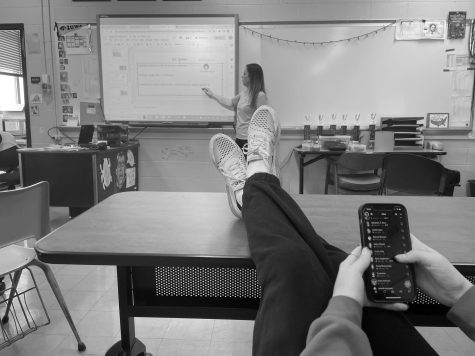
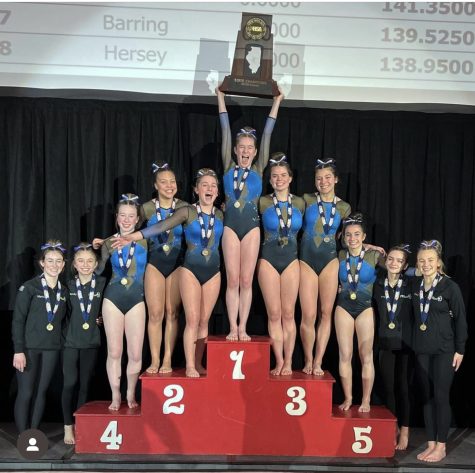
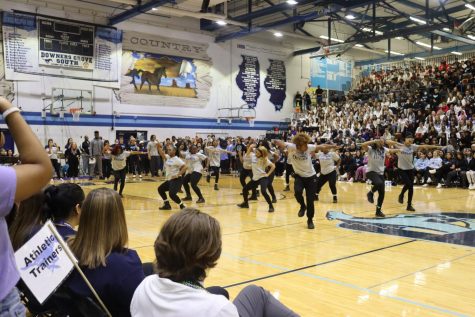
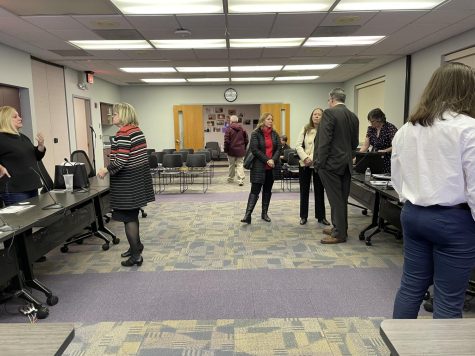
Bridget Barnebey • Apr 19, 2018 at 8:32 am
This article as well as the photos and video perfectly capture the walkout. Thank you to the blueprint members who worked hard to create and share this with everyone!
Jackie McCaleb • Mar 16, 2018 at 8:39 am
Proud of both my daughters who stood up for what they believe in!
Mary Roe • Mar 15, 2018 at 10:12 pm
How about we take this a step further; talk to that student sitting on the bus alone or in the cafe alone. Include the student you think is different, reach out to the student not in your group. Remember if we all take that next step, some of these situations might not happen.
Carole Long • Mar 15, 2018 at 7:26 pm
Well done, Blueprint journalists! Congratulations to Mary Long for teaching students to report all sides of the news with integrity. As a long-time resident of DG who had children attend the public schools, I’m disappointed that the administration did not support these students and take advantage of this opportunity to teach how peaceful protests can move government. I’m proud of them for supporting safer schools!
Brad Cooper • Mar 15, 2018 at 4:56 pm
Boycotting our 2nd amendment or a demonstration of condolence for the victims? One I agree with the other, why?
RT • Mar 15, 2018 at 3:57 pm
I love that the students are speaking out but I’m sad that they are fighting so hard to have THEIR rights contolled/taken away by the government.
Noel Brusman • Mar 15, 2018 at 3:01 pm
Congratulations to the fine students at DGS who stood with their fellow students across the country. The students see politicians terrified by NRA money and failing to act. We are fortunate to have Rep. Bill Foster and Senators Durbin and Duckworth who stand tall with all of us. These students will not forget and will VOTE>
Kirsten Gard • Mar 15, 2018 at 11:44 am
Great article. I’m proud to be an alum of this school and this newspaper.
MR • Mar 15, 2018 at 9:04 am
I went to HSHS, but my dad taught at DGS and the fact that they are giving detentions to protesters is disgusting. The swipe stations took longer than the actual protest. That is absolutely moronic.
Leslie Hrejsa • Mar 15, 2018 at 7:48 am
I want to say how proud I am of the students that took part in the walkout. We need to continue to be a voice for common sense. By joining together for marches and this walkout we realize we are not alone in our concerns for our country , our schools and our most precious resource :the students that occupy those schools.
I have two daughters that graduated from Downers South. One daughter was at South when the shootings at Columbine occurred. The nation was stunned but nothing happened because no one stood up to the NRA. The movement that high school students across the country have started is one to be proud of. Thank you for taking a detention to help make the country safer.
My family will be marching on the 24th. It is the least we can do to help end the madness.
Leslie Hrejsa
Michael A. Webber • Mar 14, 2018 at 8:00 pm
The kids that walked out should NOT face suspension, detention or anything else. I compliment them.
This issue is MUCH, MUCH larger than school discipline, or whatever other policy the Administration and BOE are using. (And I would like to see it in writing!)
If someone gets suspended, I would gladly buy their breakfast/brunch that day. If I can serve someone’s detention for them, just let me know.
Mike Webber
DGN ’68.
Margaret Healy • Mar 14, 2018 at 4:40 pm
Well done to all the students all over the USA, we in Ireland cannot comprehend the fear you are going through every day with the gun laws you have. You are the ones who can change all this. My prayers are with you.